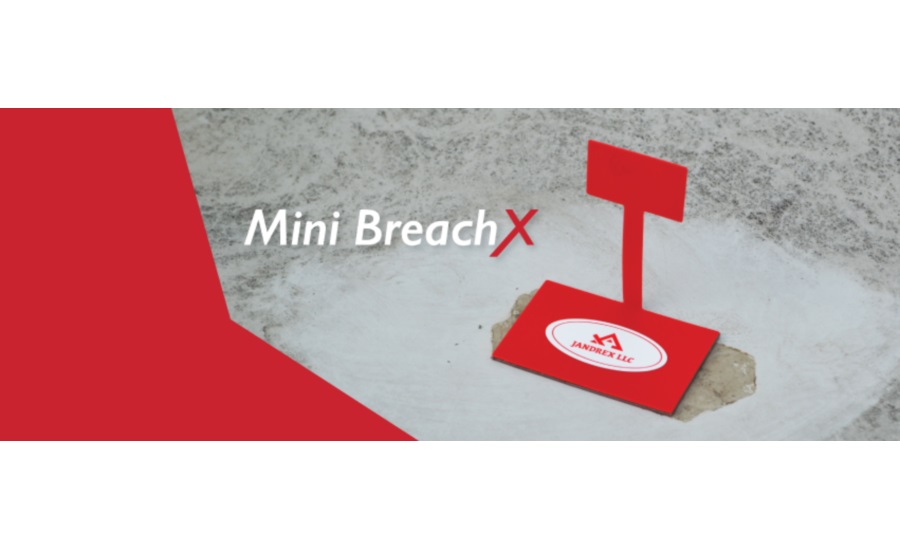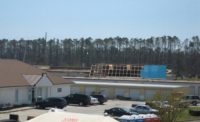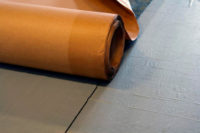Jandrex LLC announced the launch of Mini Breach X, a new and unique product for temporarily sealing roof membrane punctures, rips, and tears, and other breaches found during inspections, maintenance work, and new roof installs, and flagging these breaches for easy discovery by post-inspection repair workers.
- Saves time and money
- Temporarily seals and identifies roof membrane breaches
- Flags location on vertical or horizontal surfaces
- Identifies locations of punch list items
- Identifies equipment for maintenance repairs
- Identifies item on any special inspection you perform
Currently, flat roofs typically require annual inspections, maintenance, and repairs. These roof inspections can be conducted by certified manufacture representatives, owner representatives, mechanical contractors, or roofing contractors. The process typically begins with an inspection of the roof. Inspections include identifying breaches in the membrane caused by foreign objects such as debris, hardware, and traffic from owners and maintenance personnel, or membrane seam failure. These breaches often take on water that is shed from the roof surface which may cause costly damage inside the building or other structure.
These breaches are often extremely small; typically less than a few inches in length or diameter. And, these breaches can be located anywhere on a massive roof which could be millions of square feet in size. The standard practice by inspectors is to “flag” these minor breaches once they have been located so they can be found by post-inspection repair workers who will then seal the breach. The typical “flagging” technique is to place a circle around each breach with a pen or permanent marker; then, in some cases, plot each breach on a roof-plan or drawing.
This practice is flawed in at least four ways.
- It is costly and time consuming to both flag the breach and accurately create plots on a roof-plan or drawing.
- Since the roof could be millions of square feet in size, the circular marks around the breaches are extremely difficult for post-inspection repair workers to find, creating the high probability of errors (failure to find the markings).
- It could be weeks or months before a post-inspection repair worker appears on site to fix the breaches; during which time, water may continue to infiltrate the breaches, and create potential for damage inside the building or other structure.
- Since the markings are difficult to find, with the current practice it is often difficult for post-inspection repair workers to verify that they have found each breach for repair.
Additionally, during an inspection, it is typical to find other problems on the roof that will require post-inspection repair such as damage to roof drains, mechanical equipment, skylights, solar panels, surface mounted piping, and any other mechanical or electrical device mounted to a roof (“devices”). These also require “flagging” and post-inspection repair.
Therefore, what is needed is a product and process for more effectively flagging a breach for follow-on discovery by a post-inspection repair worker, and, at the same time, creating a temporary seal to the breach which will prevent further infiltration of water into the breach between the time of the initial inspection and the time of the subsequent permanent repair.



